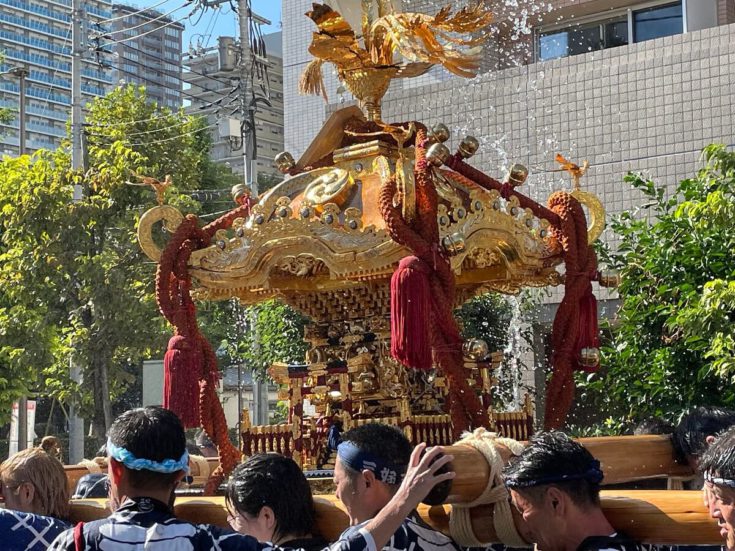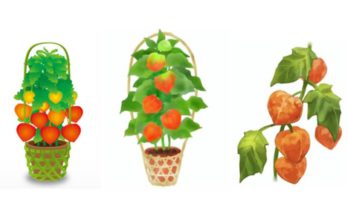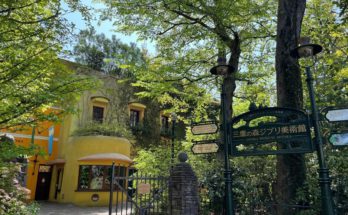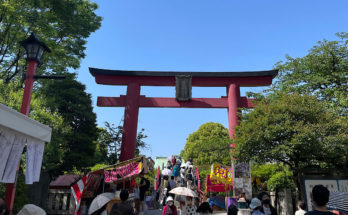Index
- About Fukagawa Hachiman Festival
- What is “Mikoshi”?
“Wasshoi, Wasshoi!”: What does it mean?
Meaning of water splashing. - How to participate in the Fukagawa Hachiman Festival.
- Interview with “Mutsumi,” a person involved in the festival.
1. About Fukagawa Hachiman Festival
The festival of Tomioka Hachimangu, a shrine in downtown Tokyo, is also known as the Fukagawa Hachiman Festival. This festival is said to have started in 1642 and is held from around August 11th to the 15th every year. The Fukagawa Hachiman Festival is one of the three major festivals of Edo, along with the Sanno Festival at Hie Shrine and the Kanda Festival at Kanda Shrine. In the main festival, which is usually held once every three years, 53 portable shrines are lined up, and a total of 25,000 people parade around the city of Fukagawa carrying the portable shrines for 8 kilometers while shouting “Wasshoi Wasshoi!” This festival is also known as the “Water-splashing Festival,” where large amounts of water are splashed over the portable shrines and the people who carry them (we can call them “carriers” or “shrine bearers”) from the roadside. At the Fukagawa Hachiman Festival, the carriers are not allowed to drink alcohol. It is a well-organized and splendid festival made up of local volunteers.
This year (August 2023), the main festival will be held for the first time in six years due to the impact of the coronavirus disaster. Many spectators and portable shrine carriers gathered, and occasionally, water splashed from the sky (in other words… heavy rain!), making it very lively.




2. What is “Mikoshi”? ( *Mikoshi is Portable Shrine in Japanese )

A mikoshi is a portable shrine: it serves as a vessel used by the gods to travel around the area during festivals, after they leave the main shrine. The mikoshi are transported by human bearers who carry these beautiful carriages for the gods around the shrine. It is said that these portable shrines are dedicated to warding off disasters in the region and praying for the happiness of the people and a bountiful harvest.
At the Fukagawa Hachiman Festival, the people of the 53 neighborhood associations around Tomioka Hachimangu Shrine wear Hanten coats with their town names on them and carry their own mikoshi. Therefore, you can see a huge procession of 53 different mikoshi. Each mikoshi has various sizes and decorations, so you can see a diverse collection of wonderful mikoshi at the Fukagawa Hachiman Festival. The heavy wooden mikoshi are carried not only by strong men but also by women. In fact, there are times when only women carry it. Basically, people living in the town work together to carry each one, which greatly contributes to the formation of the local community.
・”Wasshoi, Wasshoi!”: What does it mean?
The shouts used when carrying the mikoshi differ from region to region. At the Fukagawa Hachiman Festival, they say, “Wasshoi, Wasshoi!”
There are various theories about the shout “Wasshoi,” but it is said that it means “carrying harmony on my back” and has the meaning of building harmony between people and between towns.
When you hold the mikoshi high, they say, “Sase, Sase.” Raising the portable shrine high is a sign of respect for the gods. Also, when the mikoshi is raised and lowered, and the movement is like being tossed by the waves, they say “mo-me, mo-me.” This action is said to awaken the gods so that they can grant their wishes.
・Meaning of “water splashing”
At the Fukagawa Hachiman Festival, spectators from the roadside splash water over the mikoshi and the bearers with buckets and hoses, and both the spectators and the bearers get soaking wet, creating a lively atmosphere. Firefighters spray water from fire hydrants, and there is also a large-scale water splash on the truck bed, which is a very exciting highlight. This water originally had a meaning of “purification.” In modern times, it is also used to prevent heatstroke in people who participate in festivals held in hot summer.
3. How to participate in the Fukagawa Hachiman Festival.
In order to participate in the festival, you must wear the basic costume. Each neighborhood has its own set of Hanten coats (short coats of the Neighborhood Association), and it is important to wear them. Conversely, if you wear the basic costume of the neighborhood association, anyone can participate, even if you don’t live in that town. No participation fee is required. The costumes other than Hanten and headbands can be purchased at kimono shops. Neighborhood Association of Hanten is available for buy or rental. If you talk to the people involved in the festival at the Neighborhood Association, they will happily respond, and you can get it. All members of the Neighborhood Association are looking for bearers year-round, so they are very welcome.

*Basic costume





4. Interview with Mutsumi, a person involved in the festival
The festival is supported by the cooperation of various people, including the neighborhood association.
This time, I interviewed one of the members of Mutsumi, who is in charge of coordinating the Joint Procession of Portable Shrines.

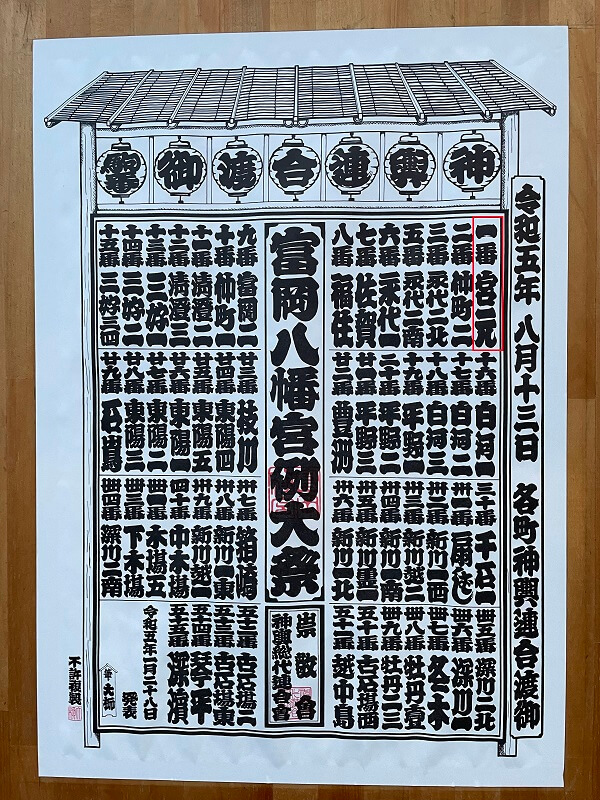
Q: What kind of responsibilities does Mutsumi have?
A: During festivals, Mutsumi leads the people carrying the portable shrine and manages its safety. Mutsumi works to protect the town’s traditional culture not only during festivals but also on a daily basis.
Q: Why did you decide to become Mutsumi?
A: I used to live in this town and was interested in the festival. Even though I’m not originally from this town, I was able to participate. Furthermore, there was a support system for those with no experience, so I was able to participate with confidence.
Q: What do festivals mean to you?
A: It’s a lot of energy and a fun time. There are many people inside and outside of town who support us on a daily basis, and this is a stage where I can express my gratitude for them.
Q: What do you enjoy most about festivals?
A: I love the moments when people come together, and the energy resonates.
5. Conclusion
It was quite some time ago that I first participated in the Fukagawa Hachiman Festival, but I was not only exposed to traditional Japanese performances such as “taiko” and traditional culture such as “Kiyari,” I remember being moved by the people involved in the festival, how they managed the festival with consideration for safety, and how they genuinely enjoyed the festival.
Just as there are various festivals around the world, Japan also has various festivals depending on the region. Through festivals, you can learn about the local culture and feel the hearts of Japanese people. If you come to Japan, please try to see and participate in festivals.
This time, in preparing the manuscript, we received the cooperation of one of Mutsumi, who carried the first Mikoshi “Miyamoto” this year (2023). Thank you very much.
I have loved festivals since I was a child, so I wrote this article because I wanted to introduce Japanese festivals. I am learning English because I want to communicate with foreigners and broaden my horizons. In order to convey the wonderful things about Japan, I think I have to study about Japan as well. Please feel free to leave comments on your impressions of this article, the Japanese culture you want to know, etc.

